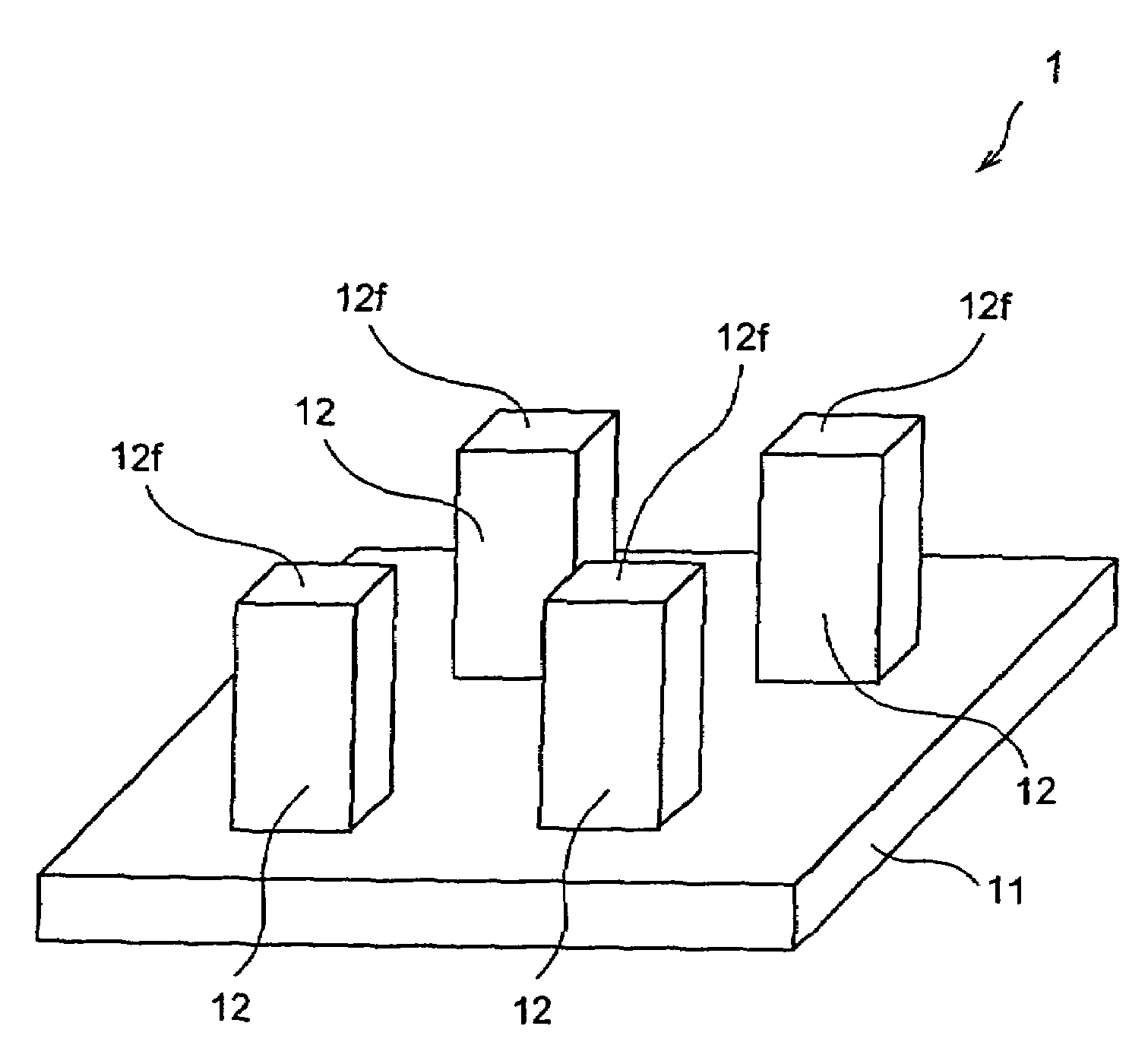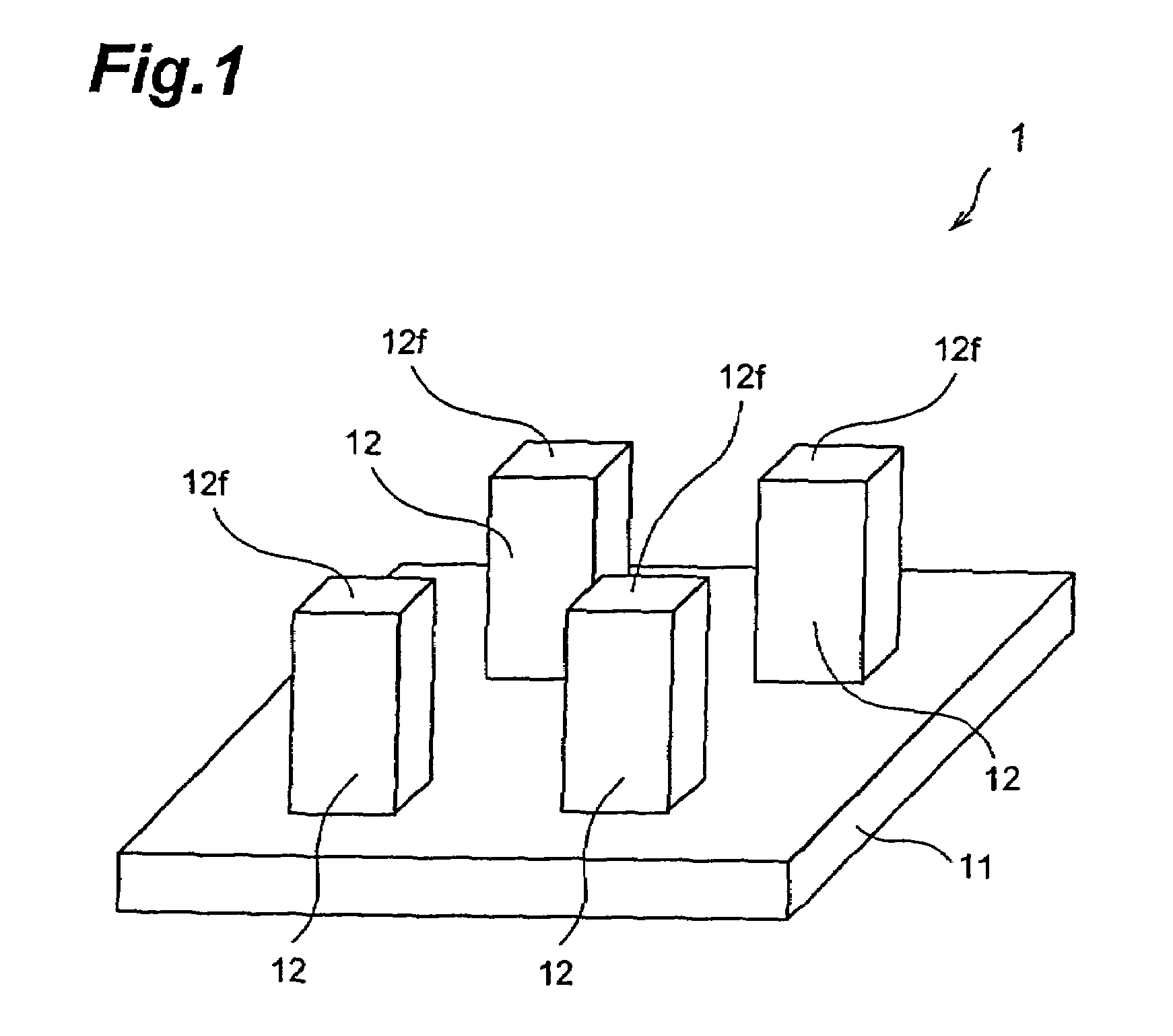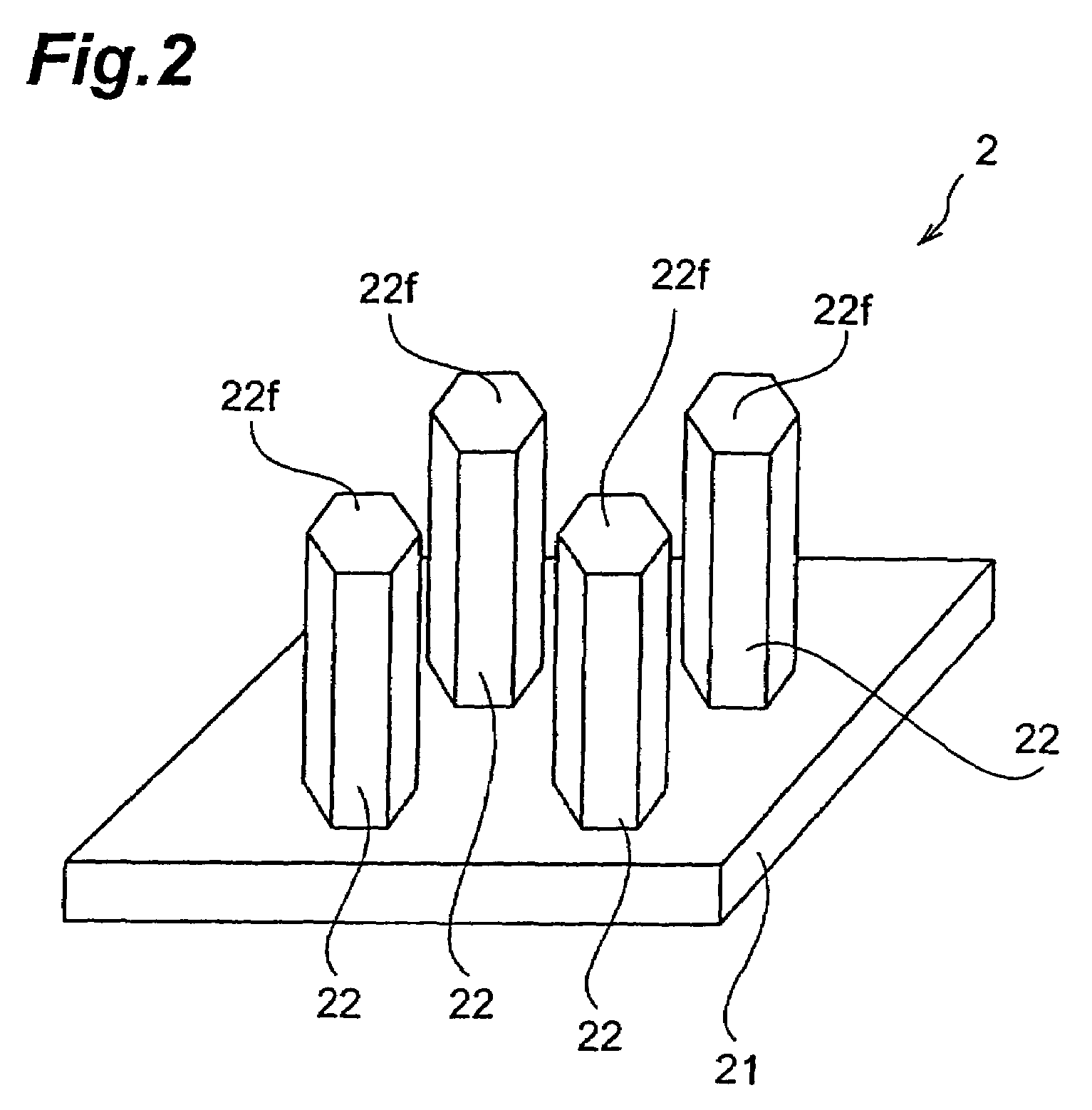Microfabricated diamond element and method of fabricating microfabricated diamond element
- Summary
- Abstract
- Description
- Claims
- Application Information
AI Technical Summary
Benefits of technology
Problems solved by technology
Method used
Image
Examples
first embodiment
[0084]First, the structure of the microfabricated diamond element (diamond element 1) in the first embodiment will be described. FIG. 1 is a schematic diagram showing a simplified form of diamond element 1. The diamond element 1 is comprised of a substrate 11, and a plurality of quadrangular columns 12 (microscopic projections) arranged at equal intervals on the substrate 11, made of diamond, and having side faces of flat faces. The diamond making the quadrangular columns 12 demonstrates luminescence characteristics against excitation means such as electron beam irradiation, X-ray irradiation, photoexcitation, current injection, heating, or the like and has a broad or sharp overall spectrum of generated light, which has a particularly high luminous intensity at a certain wavelength. In this specification, this wavelength is referred to as an “emission peak wavelength λ [nm]”.
[0085]It is also conceivable to design the sectional shape of the columnar bodies (quadrangular columns 12) i...
second embodiment
[0103]First, the structure of the microfabricated diamond element (diamond element 2) in the second embodiment will be described. FIG. 2 is a schematic diagram showing a simplified form of diamond element 2. The diamond element 2 is comprised of a substrate 21, and a plurality of hexagonal columns 22 (microscopic projections) arranged at equal intervals on the substrate 21, made of diamond, and having side faces of flat faces. The diamond making the hexagonal columns 22 demonstrates luminescence characteristics against excitation means such as electron beam irradiation, X-ray irradiation, photoexcitation, current injection, heating, or the like and has a broad or sharp overall spectrum of generated light, which has a particularly high luminous intensity at a certain wavelength (emission peak wavelength λ [nm]).
[0104]It is also conceivable to design the sectional shape of the columnar bodies (hexagonal columns 22) in agreement with another wavelength component instead of the emission...
third embodiment
[0112]First, the structure of the microfabricated diamond element (diamond element 3) in the third embodiment will be described. FIG. 3 is a schematic diagram showing a simplified form of diamond element 3. The diamond element 3 is comprised of a substrate 31, and a plurality of circular columns 32 (microscopic projections) arranged at equal intervals on the substrate 31 and made of diamond. The diamond making the circular columns 32 demonstrates luminescence characteristics against excitation means such as electron beam irradiation, X-ray irradiation, photoexcitation, current injection, heating, or the like and has a broad or sharp overall spectrum of generated light, which has a particularly high luminous intensity at a certain wavelength (emission peak wavelength λ [nm]).
[0113]It is also conceivable to design the sectional shape of the columnar bodies (circular columns 32) in agreement with another wavelength component instead of the emission peak wavelength, and to extract light...
PUM
 Login to View More
Login to View More Abstract
Description
Claims
Application Information
 Login to View More
Login to View More - R&D
- Intellectual Property
- Life Sciences
- Materials
- Tech Scout
- Unparalleled Data Quality
- Higher Quality Content
- 60% Fewer Hallucinations
Browse by: Latest US Patents, China's latest patents, Technical Efficacy Thesaurus, Application Domain, Technology Topic, Popular Technical Reports.
© 2025 PatSnap. All rights reserved.Legal|Privacy policy|Modern Slavery Act Transparency Statement|Sitemap|About US| Contact US: help@patsnap.com



